Poached Salmon
Published Feb 10, 2025
Salmon fillets poached in a high-sided pan with vegetable broth, lemon slices, shallots and fresh dill. Easy and ready in under 20 minutes.
This post may contain affiliate links. Please read our disclosure policy.
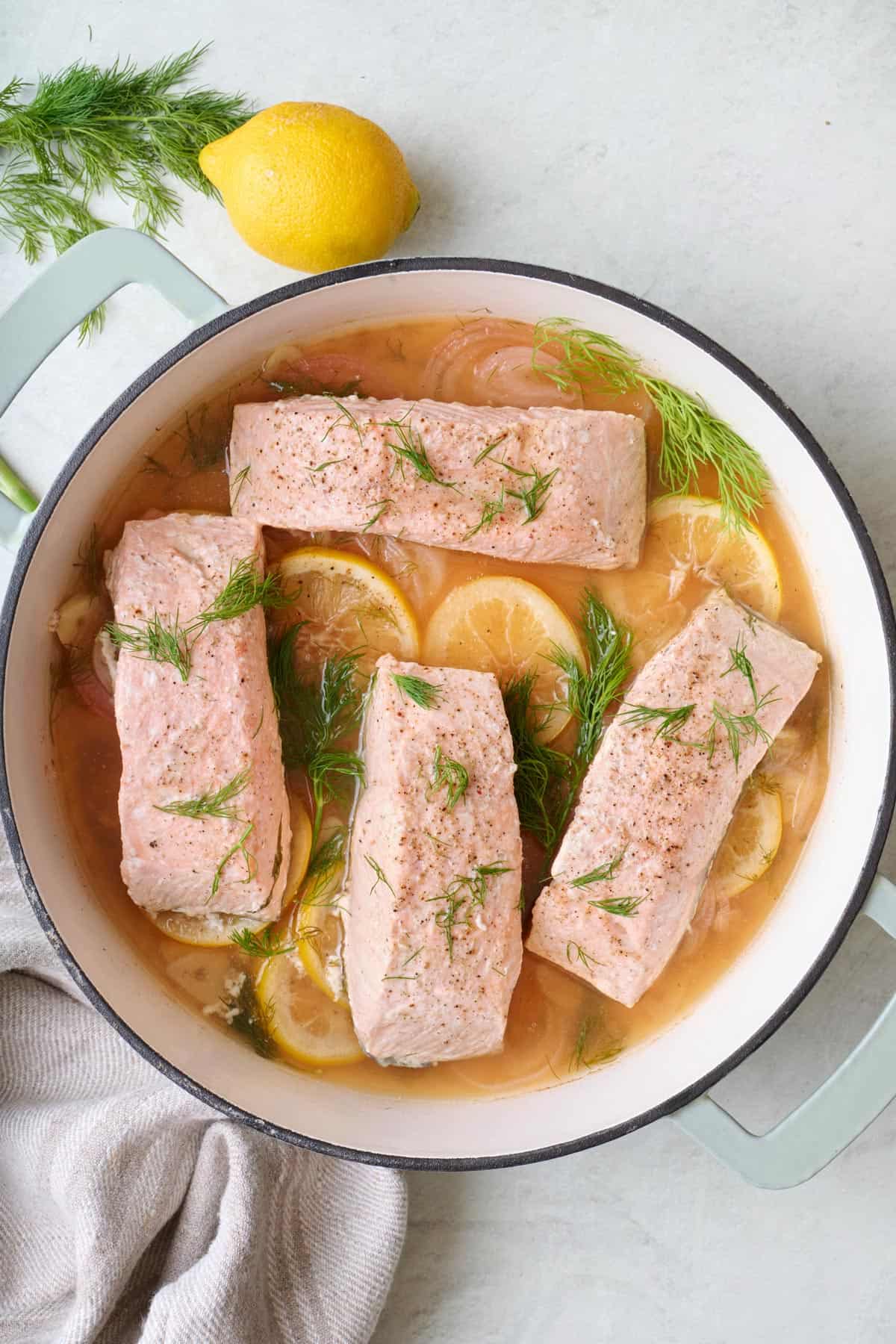
Jump to Section
My Poached Salmon is So Good!

So, I’ve been watching The Crown and they always show the queen eating poached salmon as her favorite lunch. I’m used to air frying salmon, pan searing salmon, and roasting salmon in the oven, but never poaching it.
So I went down a rabbit hole of watching all kinds of poached salmon recipe videos, and I decided to test a simple combination with broth, white wine vinegar, lemon, shallots, garlic, and dill.
Even though it’s not a pretty-looking recipe, the queen was on to something! It tastes so good! This is a new one for me, but I’m excited to try more variations of this simple poached salmon now!

Ingredients You’ll Need
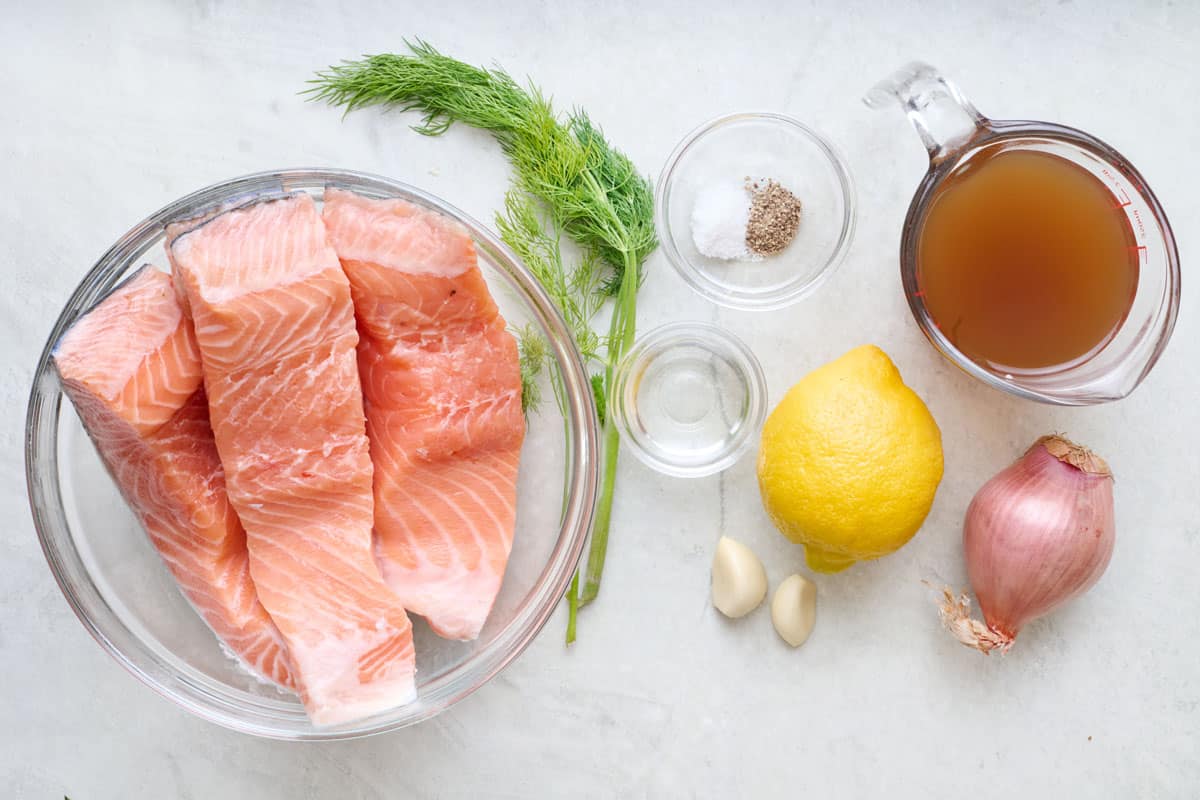
- Vegetable broth: Because the fish will absorb the flavor from the cooking liquid, I like using vegetable broth over water. You could also use seafood stock.
- White wine vinegar: You could use a tablespoon of distilled white vinegar or lemon juice if that’s what you have.
- Lemon: Slice the lemon so it adds flavor to the poaching liquid! Try another citrus—like lime, orange, or even grapefruit—instead.
- Shallot and garlic: Shallots have a mild garlicky, oniony flavor. If you can’t find it, you can use a quarter or a red or yellow onion and thinly slice it.
- Fresh dill: Another herb like rosemary, thyme, or oregano would also work.
- Salmon fillets: I prefer boneless, skin-on salmon fillets. The skin will help keep the salmon from falling apart when it’s cooked!
Variations of Poached Salmon
Some of the other options I’ve tried I’ve listed below! Besides the ingredients the cooking method stays the same with adding all the ingredients to the pan and bringing to a gentle simmer before adding the salmon.
- Tropical poached salmon. Use 1 cup coconut milk, 2 tablespoons lime juice, 1 lime (sliced), and 3 sprigs cilantro in the poaching liquid. You can also add 1 tablespoon red or yellow curry paste for extra flavor.
- Herb-infused poached salmon. Use 1 cup vegetable broth, ½ cup dry white wine, 2 cloves garlic (sliced), 3 sprigs fresh rosemary, 3 sprigs fresh thyme, and ½ teaspoon black pepper in the poaching liquid.
- Buttery, rich poached salmon. Use 1 cup olive oil instead of vegetable broth. Add 1 lemon (zested and sliced), 2 cloves garlic (smashed), 3 sprigs fresh thyme, and ½ teaspoon black pepper.
- Tomatoey poached salmon. Try 1 cup tomato juice, ½ small fennel bulb (thinly sliced), 2 cloves garlic (sliced), 1 tablespoon red wine vinegar, and 3 sprigs fresh oregano.
How to Poach Salmon
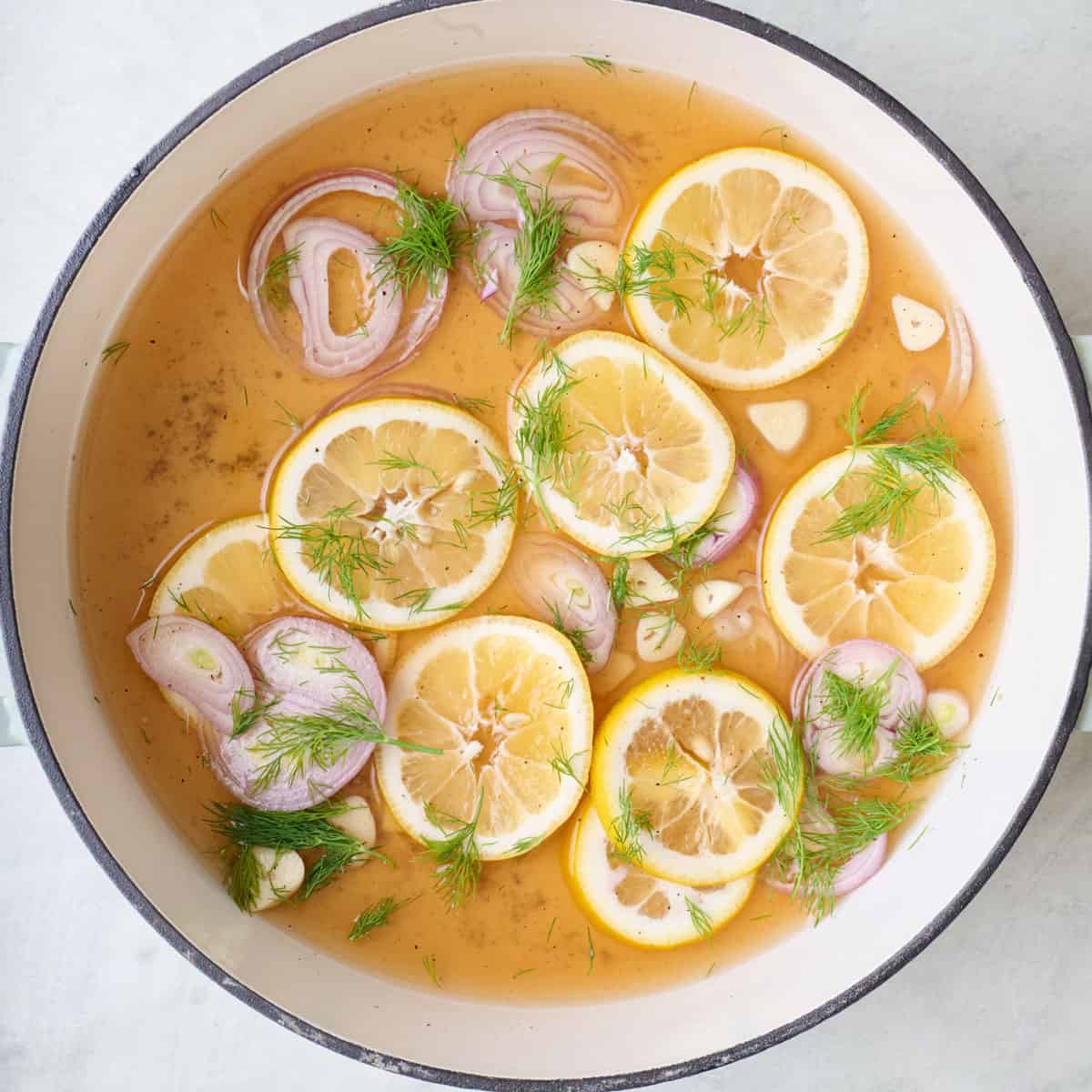
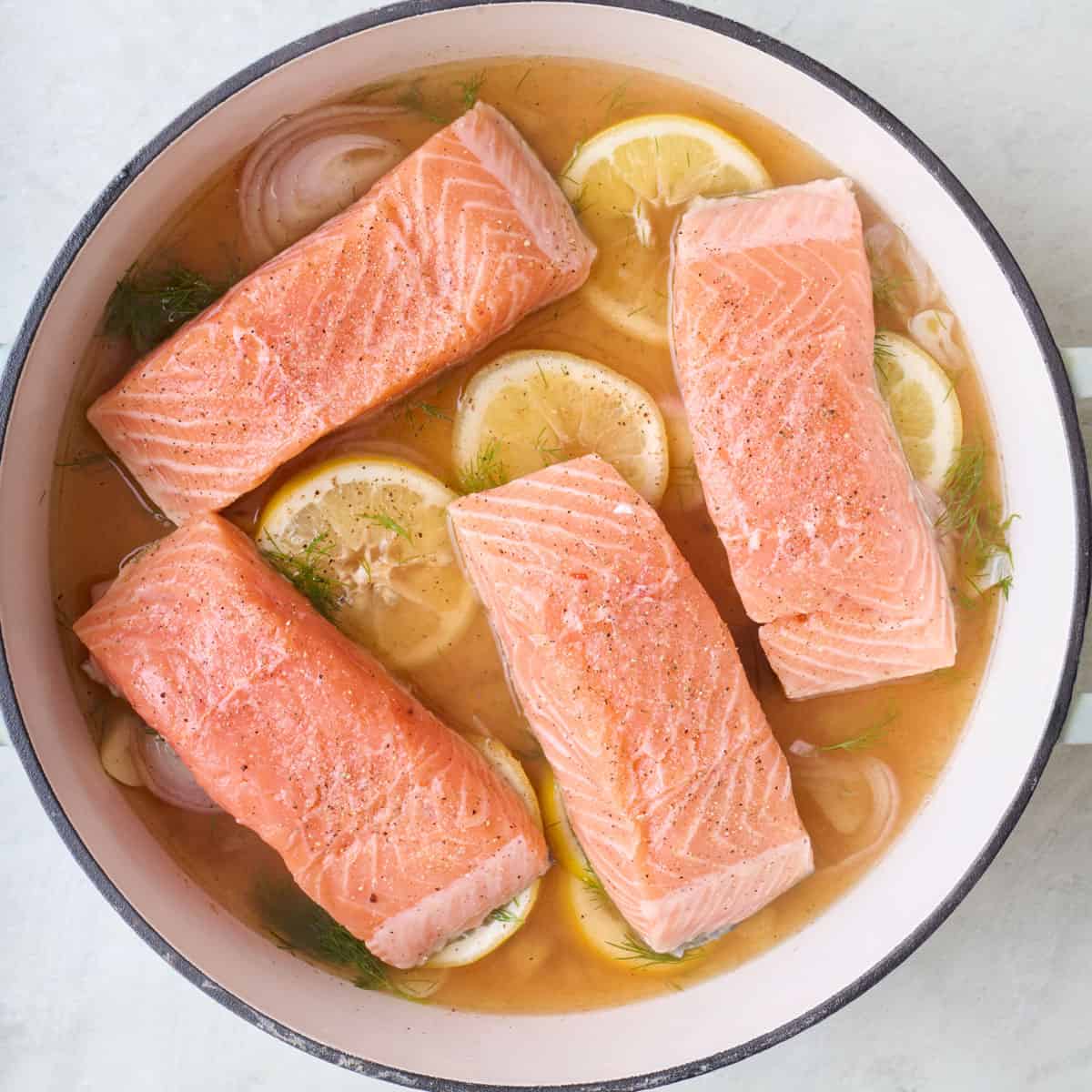
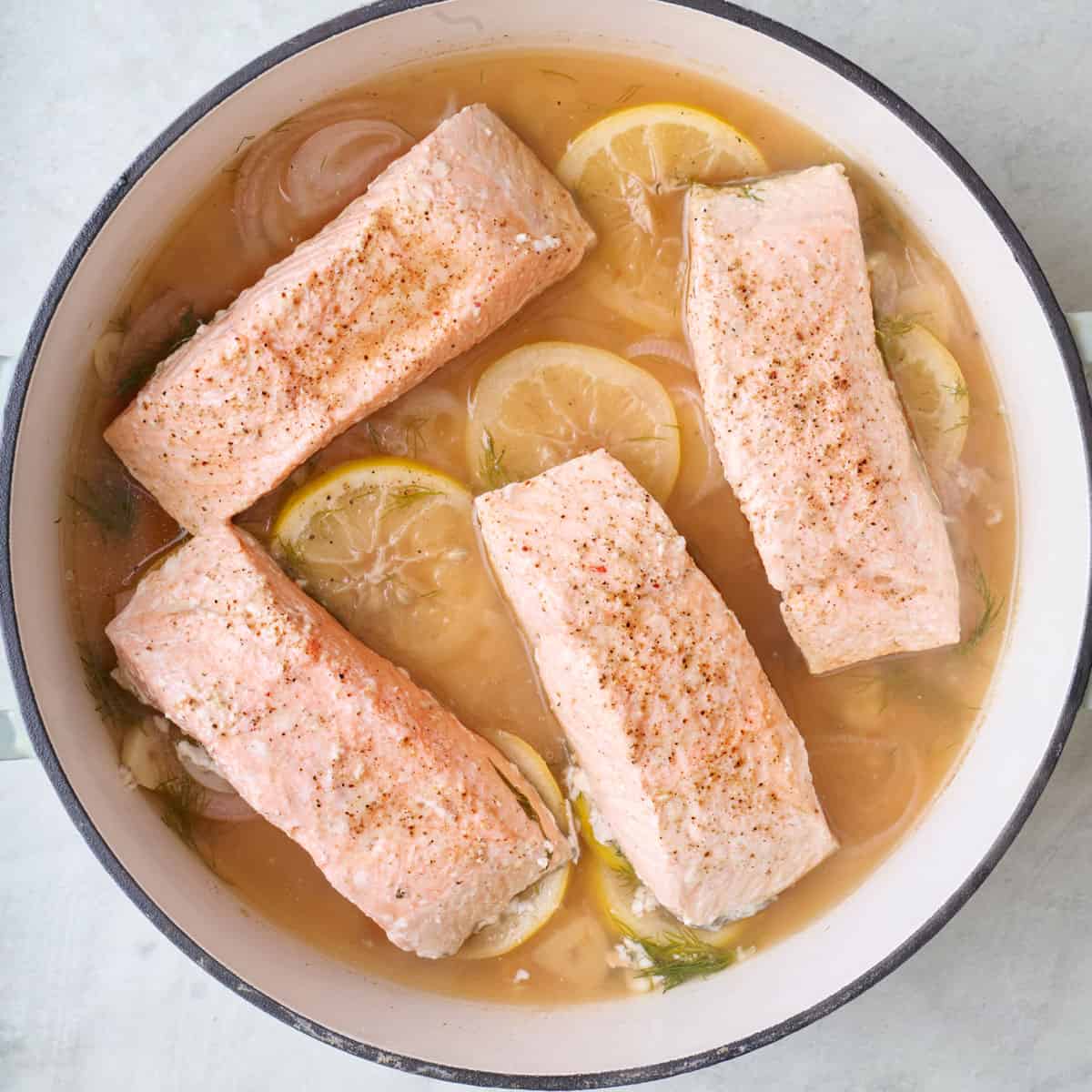
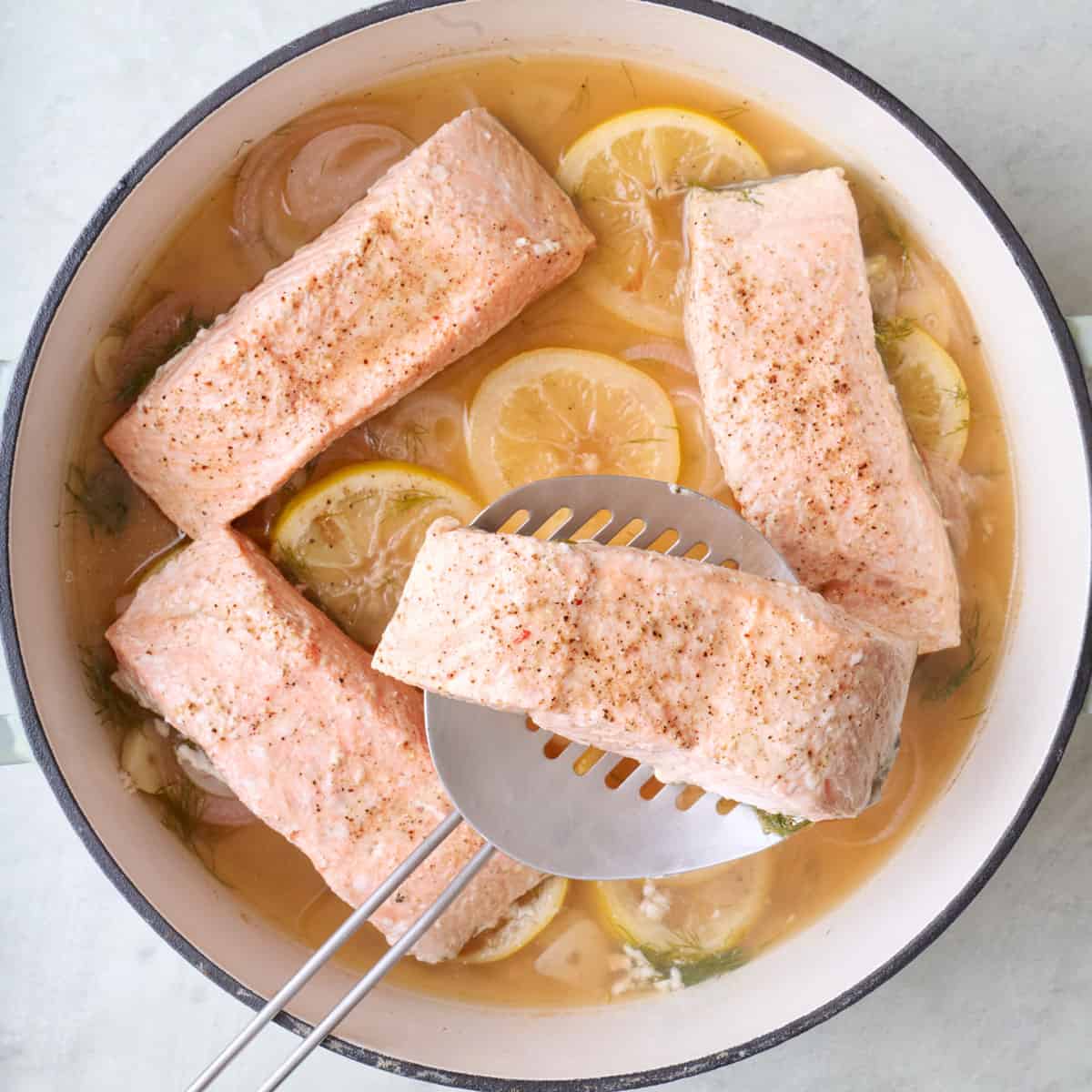

Poached Salmon
Ingredients
- 1 cup vegetable broth
- 1 tablespoon white wine vinegar
- 1 lemon sliced
- 1 shallot thinly sliced
- 2 cloves garlic sliced
- 5 sprigs fresh dill plus more for garnish
- ½ teaspoon black pepper
- 4 (6-ounce) salmon fillets
- ½ teaspoon salt
Instructions
- In a large deep skillet, combine the broth, vinegar, lemon, shallot, garlic, dill, and pepper. Bring the liquid to a gentle simmer over medium heat.
- Carefully add the salmon fillets to the skillet, skin-side down. Season with the salt and cover the skillet.
- Let the salmon poach in the liquid until cooked to an internal temperature of 145°F, about 5-8 minutes. The exact cooking time will depend on the thickness of your fillets.
- Carefully remove the salmon from the poaching liquid using a slotted spoon. Transfer the salmon fillets to serving plates and garnish with fresh dill.
- Serve with hollandaise sauce, if desired.
Equipment
Notes
Nutrition
Nutrition information provided is an estimate. It will vary based on cooking method and specific ingredients used.
My Best Poached Salmon Fillet Tips
- Use veggies scraps for the poaching liquid. Since you’ll be discarding the vegetable broth mixture that the salmon is cooked in, you can use onion peels, lemon peels, and herb stems. It’s a great way to use food scraps to add instant flavor to the liquid.
- Watch for the white beading. One of the signs I look for when cooking salmon if I don’t want to use my thermometer is avoiding the white beading around the salmon that can form if it’s overcooked.
- Make sure to cook the salmon skin-side down. This will help stop the salmon from overcooking! It will also make the salmon easy to remove when it’s done cooking. (Flesh-side down and it could flake and fall apart in the skillet.)
- Watch the level of the poaching liquid. It doesn’t need to cover the salmon! As long as it comes partially up the sides of the salmon, the fish will steam and poach still.
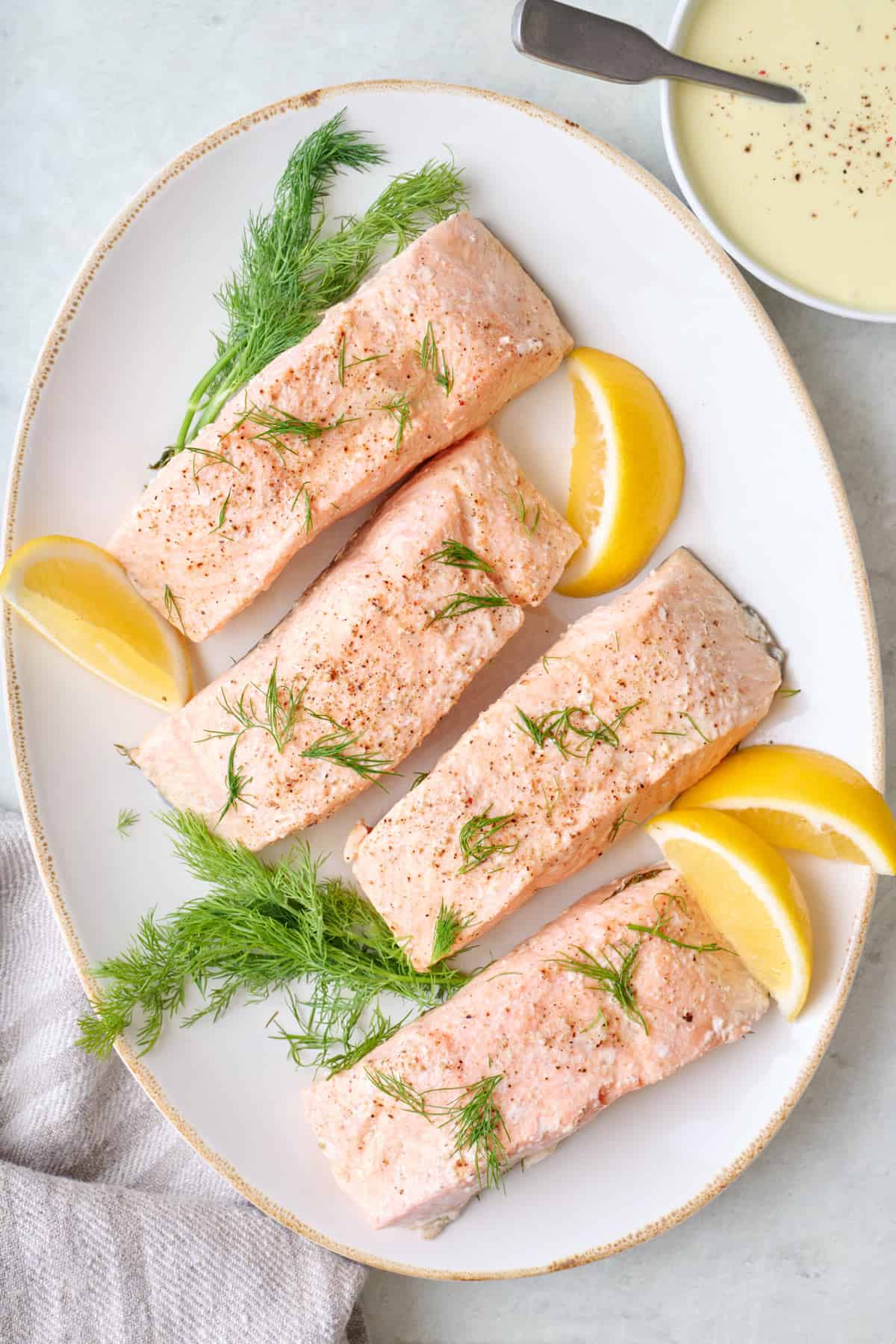
What to Serve
Recipe Help & Common Questions
Kept in an airtight container in the fridge, the boiled salmon will last for about 3 days. I’d recommend just warming it for a couple of minutes on low heat in the microwave.
The easiest way is to use a meat thermometer. When the thermometer reads 145°F when inserted into the thickest part of the fish, the salmon is done.
You can! If you’re planning on making poached salmon again, let the cooking liquid cool, the pour it into an airtight container. It will keep in the fridge for 4-5 days.
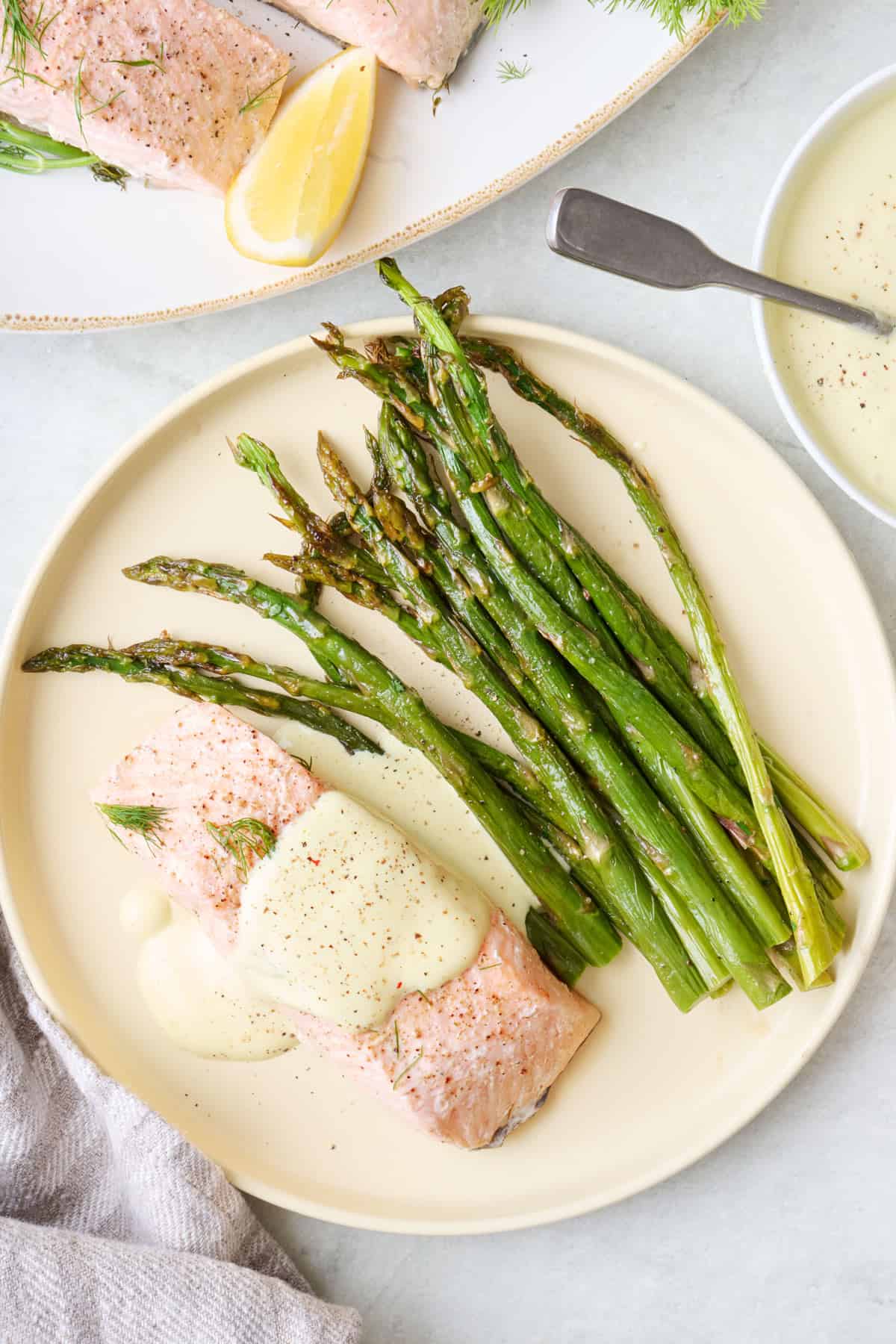
More Salmon Recipes:
- Crispy Salmon Bites
- Salmon Veggie Kabobs
- Crispy Salmon Fish Sticks
- Mediterranean Stuffed Salmon
- Lemon Honey Salmon
- Baked Honey Mustard Salmon
- Lemon Pepper Salmon Fillets
- Spicy Harissa Salmon
- Easy Skillet Salmon
- Buttery Roasted Salmon with Asparagus
If you try this Poached Salmon recipe or any other recipe on Feel Good Foodie, then don’t forget to rate the recipe and leave a comment below! It helps others who are thinking of making the recipe. I would love to hear about your experience making it. And if you snapped some shots, share it on Instagram so we can repost on Stories!





